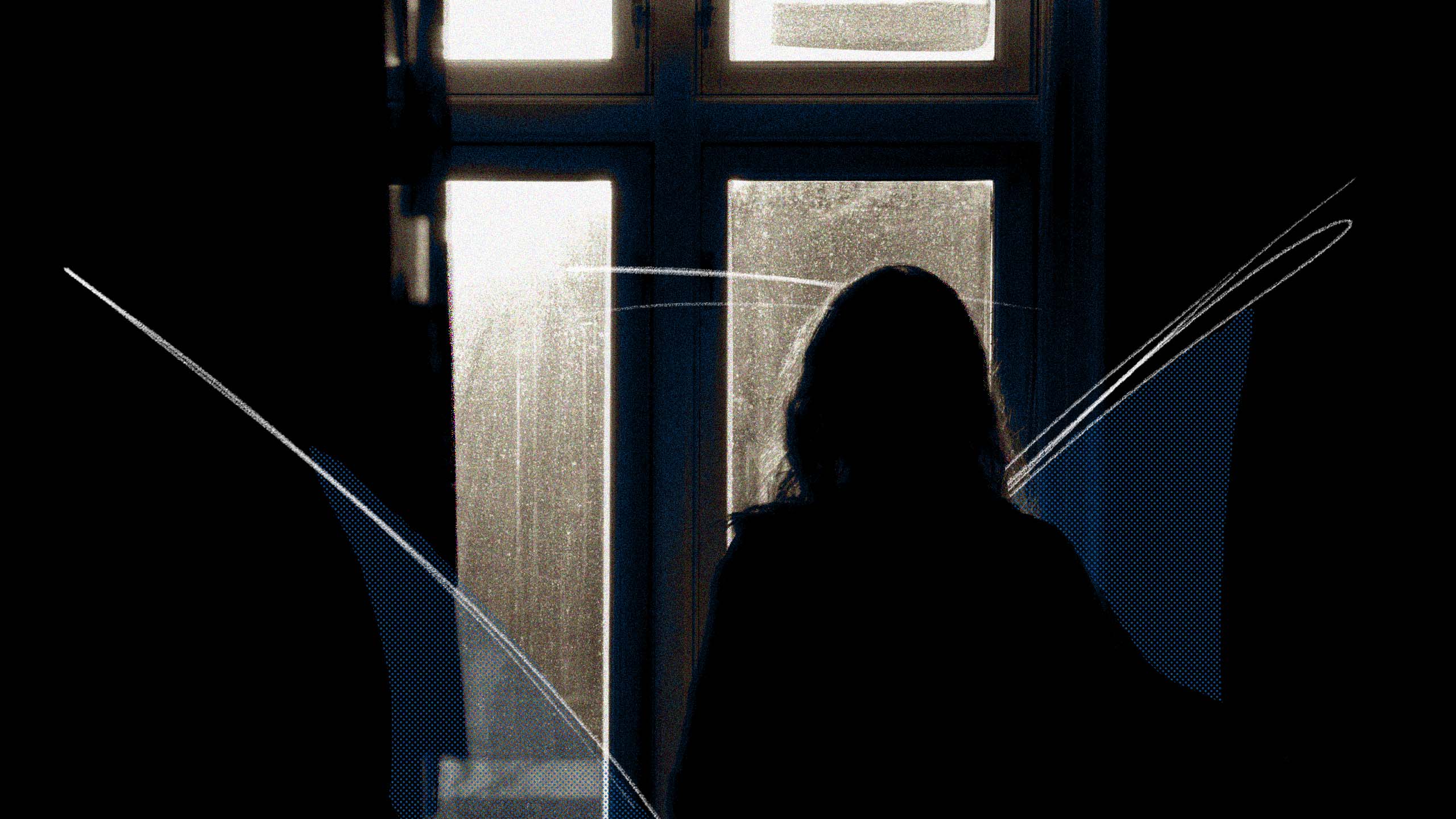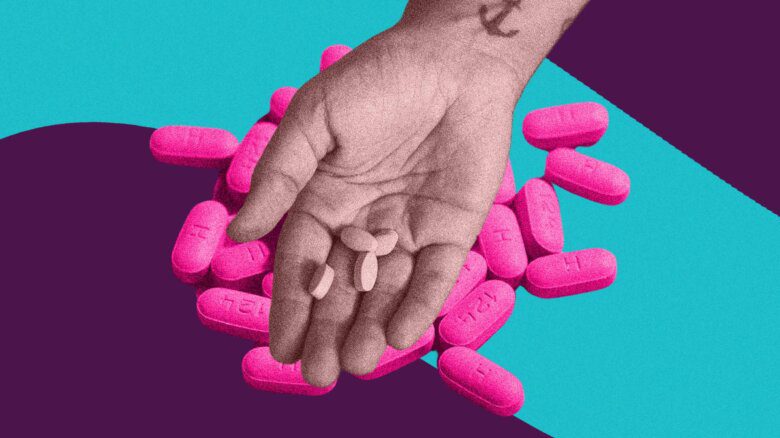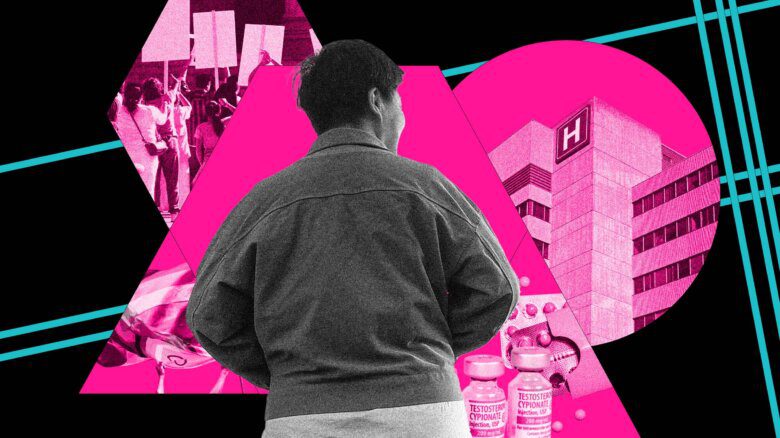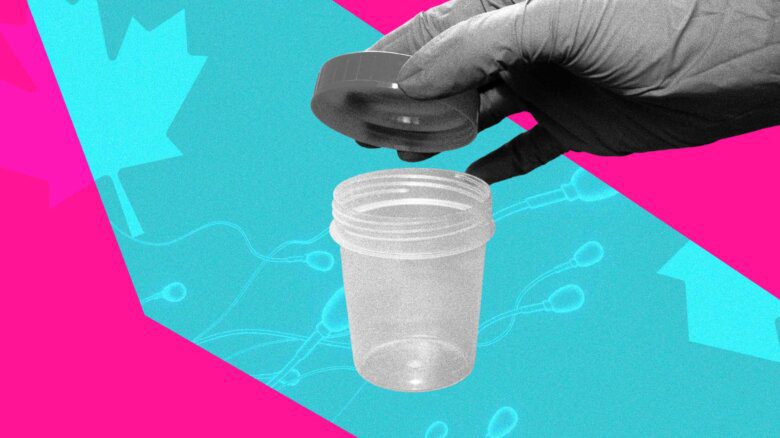Men get abortions. So do non-binary people who can pregnant; so do transmasculine people writ large. This should not need repeating in 2022, but it does. When feminists refer to the ways “men” benefit from abortion, they usually mean cisgender men whose equally cis female partners get abortions. When the New York Times runs a feature on men’s abortion stories, men who oppose abortion are interviewed; trans men are not.
Under these conditions, it’s no surprise that trans people’s experience of abortion is fraught. Trans men and non-binary people are vastly more likely to self-manage their abortions—that is, to give themselves abortions at home rather than visit a clinic—than cis women. They’re more likely to use unsafe methods when they do so. Trans men and non-binary people are also at high risk of sexual assault, domestic abuse and reproductive coercion, a form of intimate partner violence that is specifically focused on controlling the victim’s reproductive healthcare or getting them pregnant against their will; all of this can make unplanned pregnancy more likely, and visits to clinical providers less safe. Finally, they experience trauma and discrimination at the hands of reproductive healthcare providers, which makes taking matters into their own hands feel like the safest option.
Which is to say: even before Roe v. Wade was overturned in June 2022, clinical abortion was out of reach for many trans people. Now that abortion and trans healthcare are both increasingly being criminalized within the United States, that reliance on nontraditional methods is both more dangerous and more important than ever.
The most substantive research on trans people and self-managed abortion comes from a 2022 study published in the BMJ Journal of Sexual and Reproductive Health. That study found that “formidable barriers to facility-based abortion care” and “a strong desire for privacy and autonomy in the abortion process” were leading trans people to attempt self-induced abortions in huge numbers.
“About one in five [trans] people who had ever been pregnant had attempted to end a pregnancy on their own, which is orders of magnitude higher than what we’ve been seeing among cisgender women in the U.S.,” Dr. Heidi Moseson, a researcher on the BMJ study, says over the phone. Among cis women, that number is “about seven percent.”
Self-managed abortion is not necessarily a health risk, Moseson says. The abortion pills mifepristone and misoprostol, which can be ordered online and taken at home, are just as safe and effective as getting a surgical abortion at Planned Parenthood; they are, increasingly, the best option for most people, particularly post-Roe. The issue is that most trans people aren’t taking them.
“Attempts were very common, much more common than we’ve seen elsewhere. But notably, no one [in our study] used mifepristone and misoprostol to end their pregnancy,” Moseson says. Instead, 38 percent of the trans people she surveyed used herbal abortion methods; 18 percent tried to induce miscarriage with substance abuse and 25 percent used “physical trauma.”
Those numbers call to mind old pre-Roe horror stories about pregnant people drinking a quart of gin or jumping down the stairs, and they should. While it’s true that Moseson’s study has a relatively small sample size—surely, there are some trans people who have used mifepristone and misoprostol in the world—it’s also true that people who are systematically shut out of traditional reproductive healthcare are more likely to look for unconventional (and unsafe) solutions.
“People who are used to operating outside the established system are more likely to have a game plan for when that system fails.”
Yet it’s dangerous to condescend to people who manage their abortions in nontraditional ways, says ReproAction’s Kara Mailman, a non-binary trans masc who self-managed their own abortion with a cocktail of herbs when he was still young and deeply closeted.
“I lived in extremely rural Georgia and did not have clinic access within, like, two hours of where I lived, and I was a student at the time with no car and a strict, conservative, anti-abortion Catholic upbringing. So I didn’t really feel like I could ask anyone for help,” Mailman says. “I was so desperate, because I did not want to be pregnant. I knew I never wanted to be pregnant.”
They wound up inducing with an herbal recipe they looked up on the internet.
“When you’re looking at herbal abortion remedies on Tumblr in early 2014, they don’t really tell you a whole lot about what to expect or what the potential signs of complication are,” he says. “So for 48 hours, during which I did not tell anyone what was happening, I was terrified, because I knew I was bleeding, and I knew I was kind of dizzy, and that’s all I knew.”
Mailman now works in reproductive justice, and spends much of his time educating people about using mifepristone and misoprostol to safely self-induce. “What I, specifically, did was probably not safe,” they say, but it was also the best option they had in the moment: “You can’t put people in an emergency and then expect them not to do everything they can.”
Clinical abortion can also feel—or be—unsafe for trans people. Jake Lucas, a trans man, got an abortion at Planned Parenthood when he was 21. The procedure went well, but everything that preceded and followed it was remarkably difficult: he was in an abusive relationship with a man who had repeatedly raped him. When he got out of his abortion, his abuser was angry at having his lunch hour disrupted and refused to drive Lucas home. “I walked home from my abortion,” Lucas says. When the time came for his follow-up appointment, a similar dynamic played out. “I was too scared to tell my abuser that I had to go back to Planned Parenthood, so I ended up never going.”
It was only dire need that made Lucas consider Planned Parenthood in the first place: “Honestly, when I went to go find out whether I was actually pregnant, that was the first time I went to the gynecologist in my life,” he says. “I have pretty extreme genital dysphoria, and so the idea of having a stranger who can stick forceps inside me and do all that stuff is terrifying.”
His experiences with reproductive healthcare providers largely validated that distrust: one woman (not at Planned Parenthood, thank goodness) told him to make his body a temple for Jesus, then denied him a hysterectomy because he might want a baby. He found an OB/GYN in Philly that exclusively served trans patients; the waitlist was a year long.
Lucas’s story drives home another reason why we don’t often hear trans abortion stories: it hurts for trans people to tell them. For many transmasc people, even the idea of pregnancy, let alone the physical fact of being pregnant, induces unbearable dysphoria. Seeking abortion care can mean outing themselves to providers or exposing parts of their bodies that make them intensely uncomfortable. Even talking about it after the fact can be compromising.
“On social media, I moderately pass for cis,” Lucas says, “so I’ll talk about it, like, ‘Hey, don’t forget that trans men exist,’ or ‘Hey, don’t forget, men can get pregnant too,’ and people will be like, ‘Whaaaaaaat????’ I’m like, ‘I … I can. I have those parts in my body.’ So even just to remind people that we exist, I have to out myself.”
It makes sense, given all that vulnerability and potential trauma, that many trans people would vastly prefer the privacy of an at-home abortion, where they are the only person who has to see, touch or even think about their bodies. It also makes sense that they wouldn’t talk much to reporters, who are not widely known for safeguarding the dignity of trans people.
“When an already perilous lack of support is eroded further, do we lose what little care we have, or find new ways to survive?”
In the aftermath of Roe’s overturn, that kind of privacy and secrecy will be important for all abortion-seekers, not just trans people—and more and more people will turn to self-managed abortion when they can’t safely get across state lines. So what happens to trans people after Roe? When an already perilous lack of support is eroded further, do we lose what little care we have, or find new ways to survive?
Mailman acknowledges that the new threat of criminalization is particularly scary for trans people: “When we talk about abortion criminalization, the groups that are going to be most disproportionately impacted are Black, brown and Indigenous women and trans people,” they say. “Doctors who would already have an inclination to report abortions that they believe are, quote-unquote ‘criminal,’ their preconceived prejudices are going to directly impact who they do and do not report.”
Still, says Mailman, there is cause for hope. For one thing, people who are used to operating outside the established system are more likely to have a game plan for when that system fails.
“I don’t want to call it a good thing, because obviously it’s not a good thing that we’ve been so traumatized by physicians that we don’t trust them,” they say. “But so many of us already have self-managed abortions. So many of us already know what to do. We’re all very used to relying on each other for community-based care, and we know who to talk to within our communities. In a way we are already a little bit set up [for this].”
In an era of increasingly violent anti-LGBTQ2S+ policy, criminalizing abortion creates one more tool the state can use against trans people, especially trans people of colour. Trans bodies are already being policed; a whole lot of trans guys of my acquaintance are afraid of having their HRT banned without an adequate stockpile (testosterone, unlike estrogen, is a controlled substance and thus harder to get without a prescription) or imagining dystopian futures where we’re all forcibly detransitioned and impregnated—maybe not in that order.
Neither fear is ungrounded—but trans people are no strangers to navigating a hostile medical establishment. We can and often do survive the failures of the healthcare system, including its failure to give us the abortion care we need. A whole lot of cis women are about to find themselves in the same position that trans abortion-seekers have been in for ages. Trans abortion stories aren’t just important because they happen. They may contain lessons that all of us will need to survive.


 Why you can trust Xtra
Why you can trust Xtra


